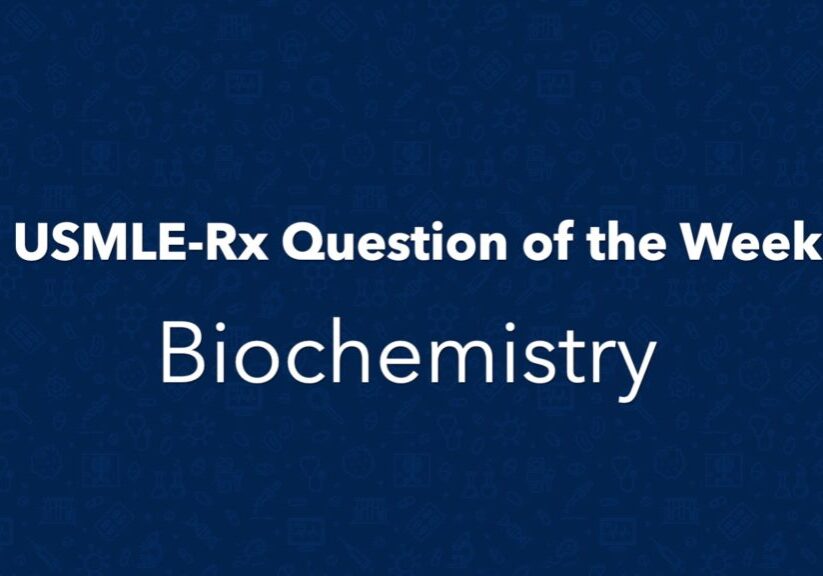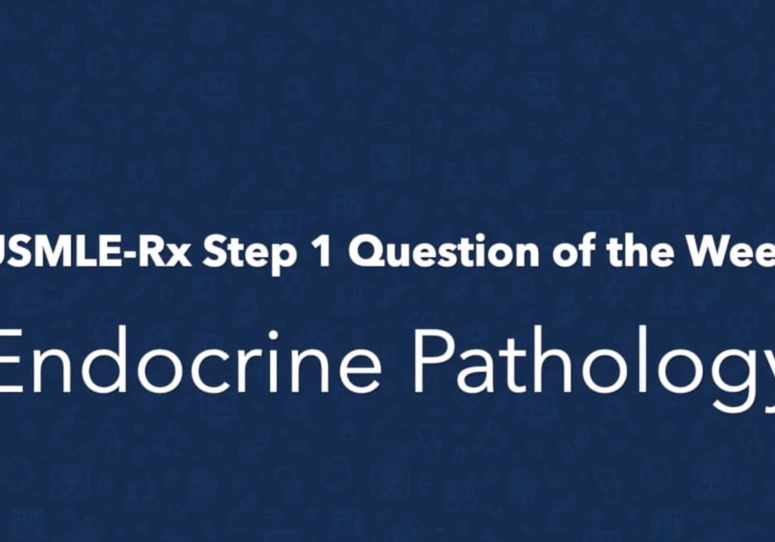Check out today’s Step 1 Qmax Question Challenge.
Know the answer? Post it below! Don’t forget to check back for an update with the correct answer and explanation (we’ll post it in the comments section below).
 A 58-year-old woman presents with a 6-month history of redness, pain, itching, and a burning sensation in her left breast, particularly around the nipple and areola. Her medical history is significant for hypertension, asthma, and untreated fibroadenoma diagnosed at age 22 years. Results of a biopsy specimen from the patient’s left nipple are shown in the image.
A 58-year-old woman presents with a 6-month history of redness, pain, itching, and a burning sensation in her left breast, particularly around the nipple and areola. Her medical history is significant for hypertension, asthma, and untreated fibroadenoma diagnosed at age 22 years. Results of a biopsy specimen from the patient’s left nipple are shown in the image.
Which of the following is the most likely diagnosis?
A. Fibroadenoma
B. Intraductal papilloma
C. Mastitis
D. Paget disease
E. Phyllodes tumor
———————–
Want to know the ‘bottom line?’ Purchase a USMLE-Rx Subscription and get many more features, more questions, and passages from First Aid, including images, references, and other facts relevant to this question.
This practice question is an actual question from the USMLE-Rx Step 1 test bank. For more USMLE Step 1 prep, subscribe to our Flash Facts and Step 1 Express video series. Score the best deal on all three products with a Step 1 Triple Play Bundle.




D) Paget’s
d. pagets ds
D
Paget disease of the nipple. The answer is D.
D.
The correct answer is D. The patient has Paget disease of the nipple (mammary PD), which is a form of breast adenocarcinoma involving the skin and lactiferous sinuses of the nipple. The disease is easily identified on histology by the presence of large cells with a clear cytoplasm surrounding a hyperchromic nuclei. These cells are known as Paget cells (and the clear cytoplasm is frequently referred to as a halo); they can be found throughout the epidermis in this disease. Classically it appears as an eczematous lesion in the nipple, often associated with excoriations, crusting, ulceration, and serosanguineous discharge. The age of presentation ranges from 24-84 years. There are four clinical stages of mammary PD. The prognosis is related to the stage of disease, as in other types of breast cancer.
A is not correct. Fibroadenoma is a common benign tumor of the female breast, and presents as a firm, solid, mobile mass. These adenomas are most common in girls in their teens and 20s, and regression usually occurs after menopause. Fibroadenomas are not associated with the eczematous skin changes seen in this patient.
B is not correct. Intraductal papilloma is a tumor of the lactiferous ducts that typically presents with bloody discharge from the nipple. An intraductal papilloma is the most common cause of bloody nipple discharge.
C is not correct. Mastitis is associated most often with breastfeeding, although chronic mastitis can occur in postmenopausal women as a result of chronic inflammation of the ducts beneath the nipple. Mastitis presents as breast erythema, engorgement, and tenderness, with fever and chills. The patient’s eczematous lesions on the nipple and areole are more consistent with Paget’s disease of the nipple with underlying ductal carcinoma.
E is not correct. The phyllodes tumor is a stromal-cell bulky tumor that often is benign. Most of these tumors present in the sixth decade as palpable masses and do not cause the symptoms this patient is experiencing.